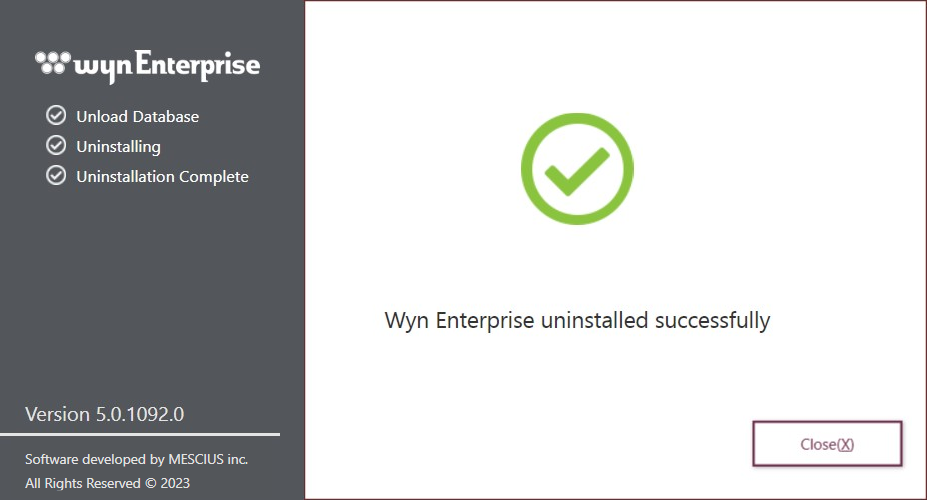- Getting Started
-
Administration Guide
-
Get Started with Administering Wyn Enterprise
- System Requirements
- Installing on Windows
- Installing on Linux
- Installing using Docker
- License Wyn Enterprise
- Deploying with HTTPS
- Deploying with Reverse Proxy
- Deploying to Azure App Service (AAS)
- Deploying to Azure Kubernetes Service (AKS)
- Deploying to AKS using Helm Chart
- Deploying to Local Kubernetes
- Deploying to Kubernetes Cluster using Helm Chart
- Deploying as a Virtual Directory or Sub-Application
- Deploying to Amazon ECS
- Deploying to Amazon EKS using Helm Charts
- Deploying in a Distributed Environment
- Migration from ActiveReports Server 12
- Upgrade Wyn Enterprise to Latest Version
- Logging on to the Administrator Portal
- Ports in Firewall
- Configuration Settings
- Account Management
- Security Management
- System Management
- Document Management
- How To and Troubleshooting
-
Get Started with Administering Wyn Enterprise
- User Guide
- Developer Guide
Perform GUI Installation
When you install Wyn Enterprise in GUI mode, there are prompt messages and dialog boxes to help with the installation process. A series of screens also appear during the GUI installation process. In this article, you will learn how to install Wyn Enterprise using the GUI mode on Windows.
To Install Wyn Enterprise
Follow the steps below to install Wyn Enterprise on Windows.
Download
https://wyn.grapecity.com/try-wyn-for-free/30-day-wyn-trialWyn Enterprise.Note: You can also download the latest Online or Offline Windows Installer from the following link:
Double-click the downloaded installer (.exe) to start the installation process. The installer will prompt you to install PostgreSQL.
Click the Next button to start the installation.
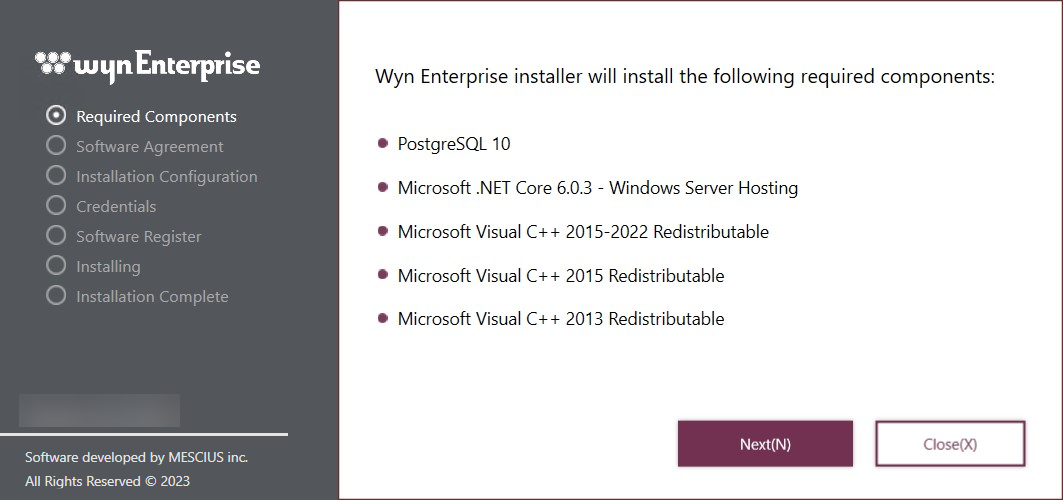
Confirm the software agreement, set the installation directory, and click the Next button. By default, the files for a newly installed application in a system are stored here, C:\Program Files.
You can also enable the option to encrypt the connection string in the configuration file here. For more information on encrypting or decrypting a connection string, visit this topic.
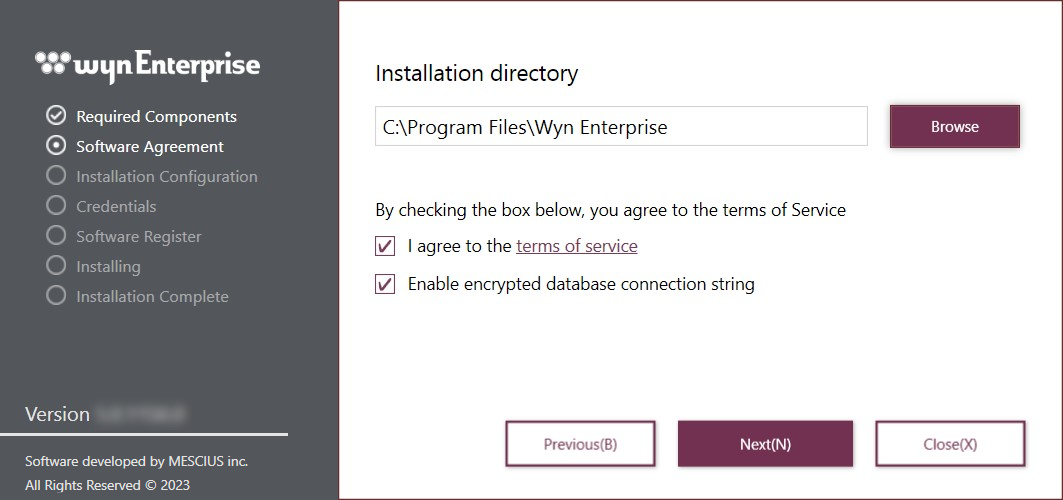
In order to import the Wyn sample documents, select the Import sample documents option. To enable deployment of Wyn Enterprise as a single process using the SQLite database as the primary database and DuckDB as the analysis database select the Enable single-process deployment option and click the Next button to continue with the installation. Importing samples helps beginners learn how to use Wyn Enterprise.
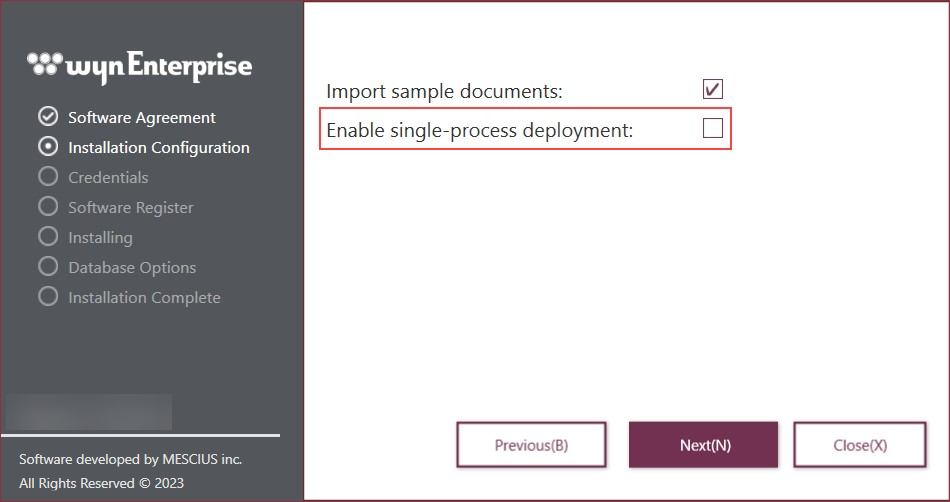
In the Credentials form, confirm the credentials for the admin login and click the Next button.
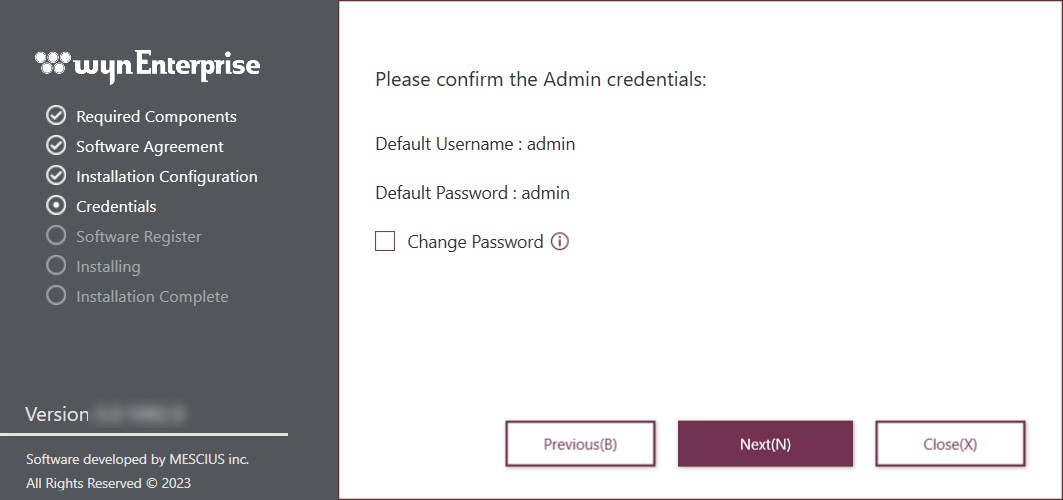
In the Software Registration form, fill in the details, and click the Install button. The registration details include the user's name, company, email, phone, city, state, country, and preferred mode of contact.
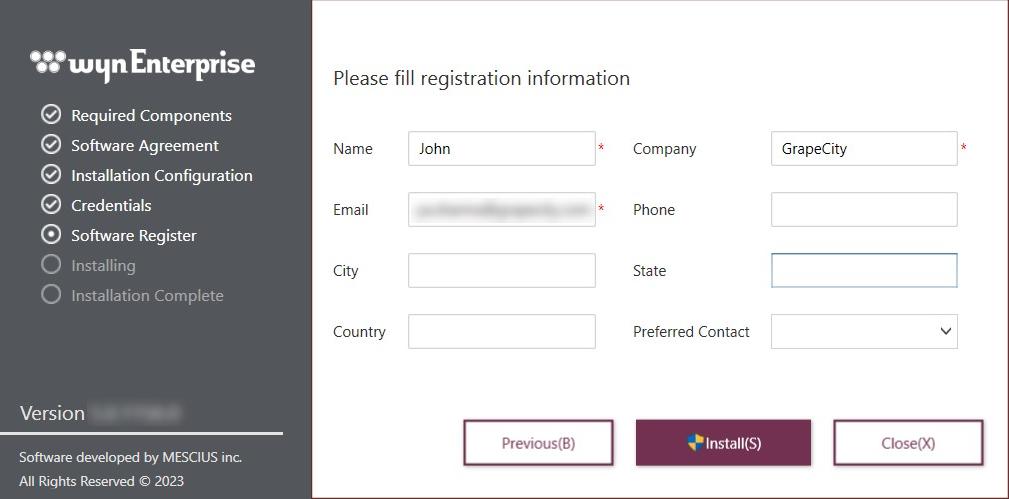
Depending on your OS, the installer may ask for your permission to allow the application to make changes on your device, click Yes to continue.
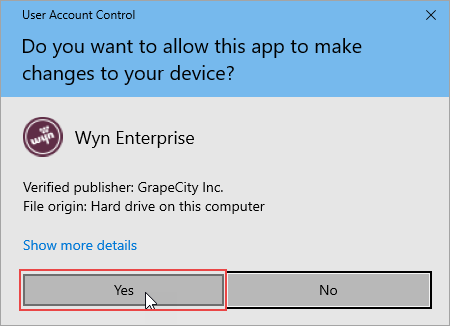
The installation process starts.
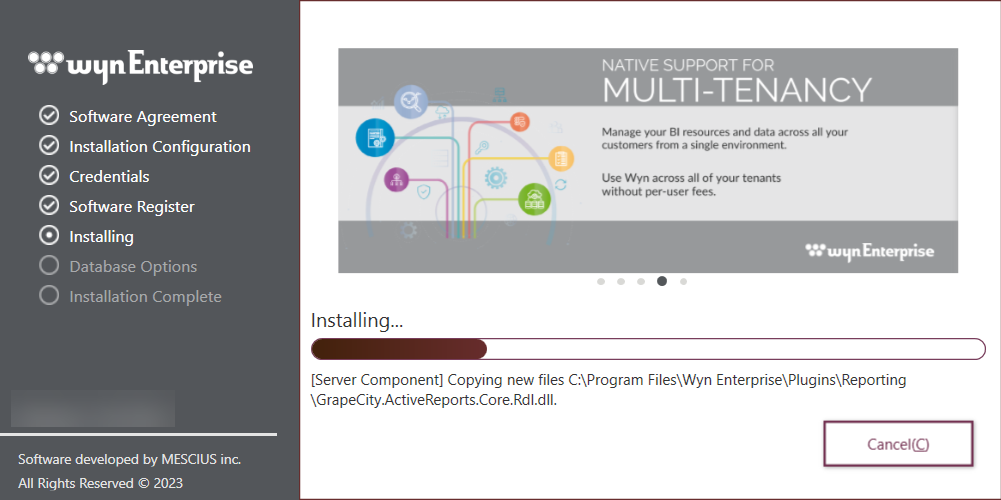
By default, Wyn Enterprise uses a built-in database for storing data. However, you can also use a custom database to meet your business requirements.
To use a built-in database, select the Built-in Database option and click the Start Program button to proceed further.
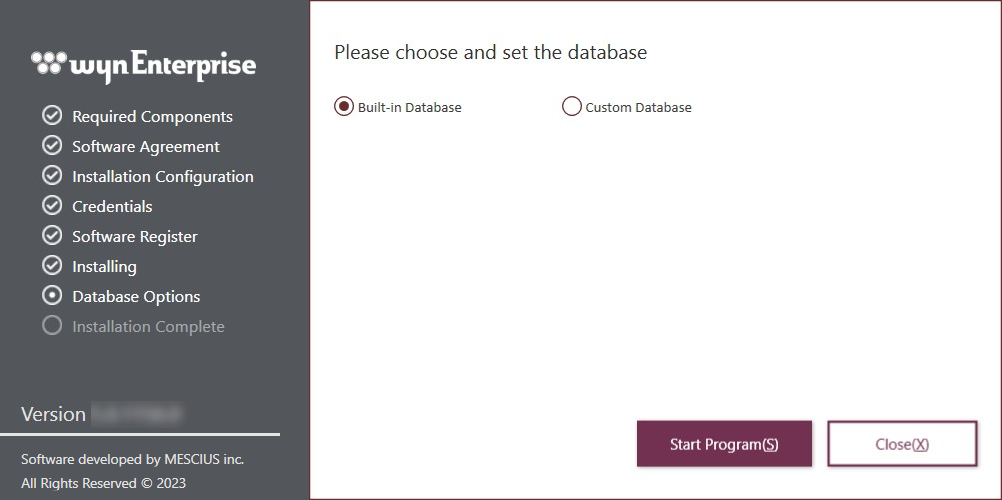
To use a custom database, select the Custom Database option and enter its corresponding configuration details in the form. For more details, see the Custom Database Configuration Options section.
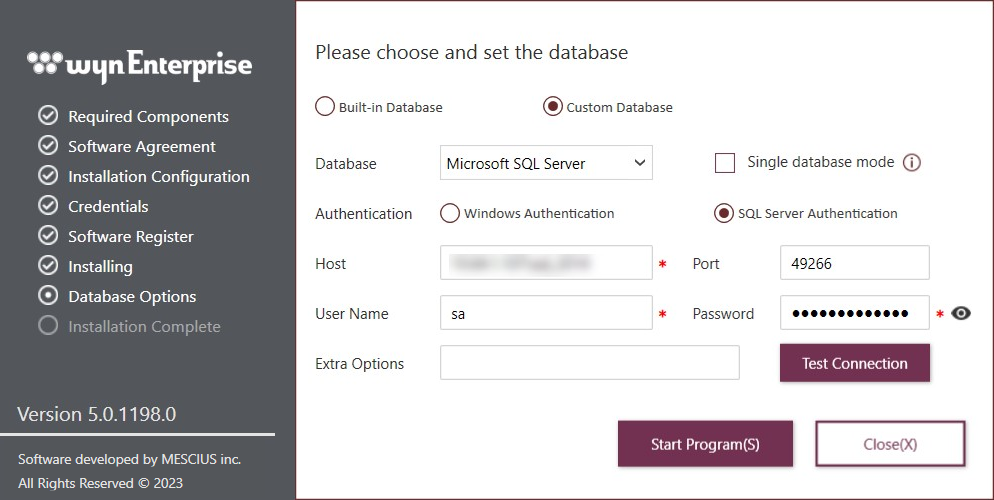
Verify the database configuration details using the Test Connection button, and then click the Start Program button to proceed further.
Note: The installation process won't start till the database connection test is successful.
Wait until the installation is finished.
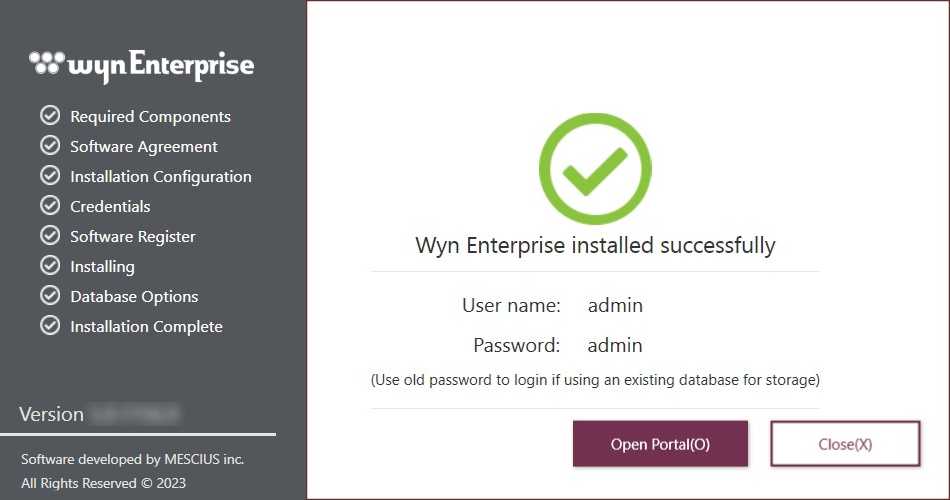
After the installation is complete, click Open Portal to open the Wyn Enterprise portal - http://localhost:51980 in the browser. The default credentials (if not changed while installation) that should be used are:
Username: admin
Password: admin
Custom Database Configuration Options
In order to use a custom database, you are required to enter its corresponding database configuration details during the installation process. In Wyn Enterprise, you can connect to any of the following database types - Microsoft SQL Server, MySQL, PostgreSQL, and Oracle. The configuration details for each database are different and are described in the below tables.
Configuration Options for Microsoft SQL Server
The below table lists the database configuration options for Microsoft SQL Server.
Option | Description |
|---|---|
Database | Select the type for the database. Over here, set it to Microsoft SQL Client. |
Single database mode | Choose whether to save the data to a single or multiple database(s). If you select this option, the data is stored in one database i.e. wyn. Else, it is stored in three databases, i.e. wynserverdata, wyndatacache, and wynis. |
Authentication | Select whether to use Windows Authentication or SQL Server Authentication. If you chose Windows authentication, enter the user name and password for the database connection. Else, enter the service account details. |
Host* | Enter the host name or address. |
Port | Enter the port number, the default is 1433. |
Extra Options | Specify the necessary options for the database connection. |
* Required fields
Configuration Options for MySQL
The below table lists the database configuration options for MySQL.
Option | Description |
|---|---|
Database | Select the type for the database. Over here, set it to MySQL. |
Single database mode | Choose whether to save the data to a single or multiple database(s). If you select this option, the data is stored in one database i.e. wyn. Else, it is stored in three databases, i.e. wynserverdata, wyndatacache, and wynis. |
Host* | Enter the host name or address. |
Port | Enter the port number, the default is 3306. |
User Name* | Specify the user name to connect to the MySQL database. |
Password* | Specify the password to connect to the MySQL database. |
Extra Options | Specify the necessary options for the database connection. For example, 'SSL MODE', 'CertificateFile', and 'CertificatePassword'. |
* Required fields
Note: The maximum allowed packet size in the MySQL database should not be less than 300 MB.
Configuration Options for PostgreSQL
The below table lists the database configuration options for PostgreSQL.
Option | Description |
|---|---|
Database | Select the type for the database. Over here, set it to PostgreSQL. |
Host* | Enter the host name or address. |
Port | Enter the port number, the default is 5432. |
User Name* | Specify the user name to connect to the PostgreSQL database. |
Password* | Specify the password to connect to the PostgreSQL database. |
Extra Options | Specify the necessary options for the database connection. |
* Required fields
Configuration Options for Oracle
The below table lists the database configuration options for Oracle.
Option | Description |
|---|---|
Database | Select the type for the database. Over here, set it to Oracle. |
Host* | Enter the host name or address. |
Port* | Enter the port number, the default is 1521. |
User Name* | Specify the user name to connect to the Oracle database. |
Password* | Specify the password to connect to the Oracle database. |
Service Name* | Specify the service name for the Oracle database. |
Extra Options | Specify the necessary options for the database connection. |
* Required fields
To Uninstall Wyn Enterprise
Follow the below steps to uninstall Wyn Enterprise on Windows.
Go to the Control Panel, select Programs > Uninstall a program.
From the list of installed programs, double-click Wyn Enterprise or right-click Wyn Enterprise and select the Uninstall/Change option.
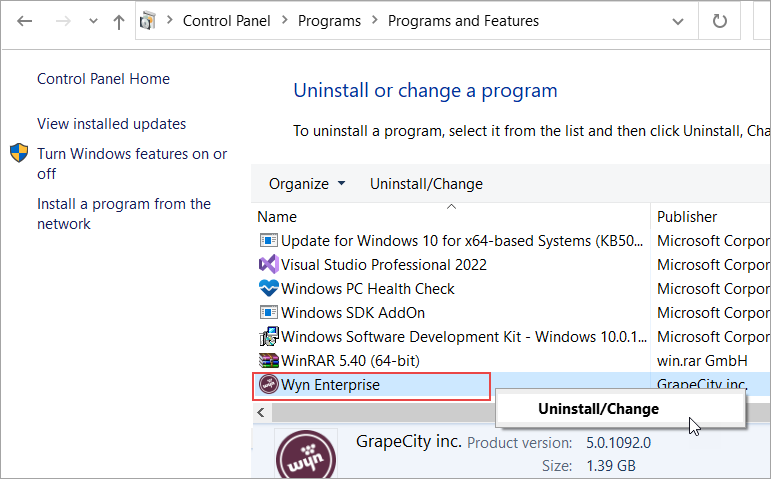
When uninstalling, you can specify whether to preserve the Wyn database using the Remove Database option. Note that once the database is removed, you cannot roll back this operation.
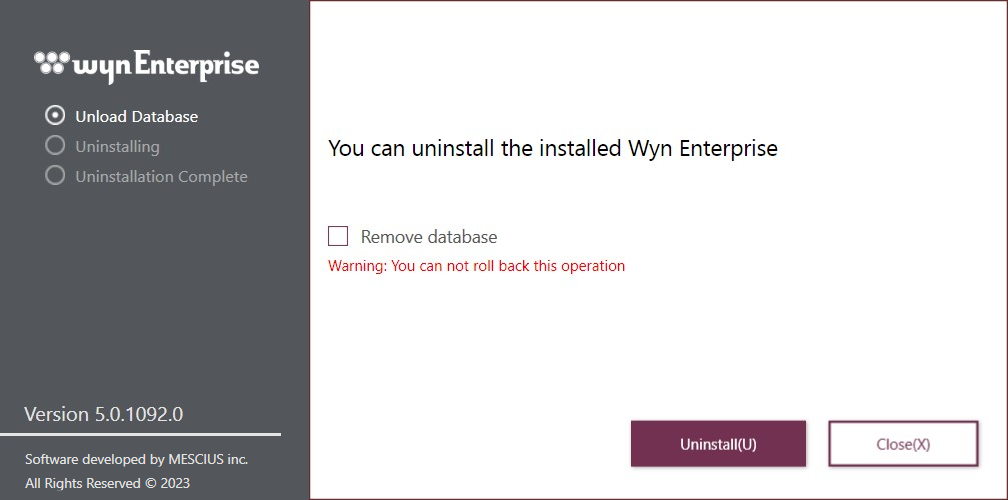
Click the Uninstall button to proceed further. Please wait for a few minutes till the uninstallation process is completed.
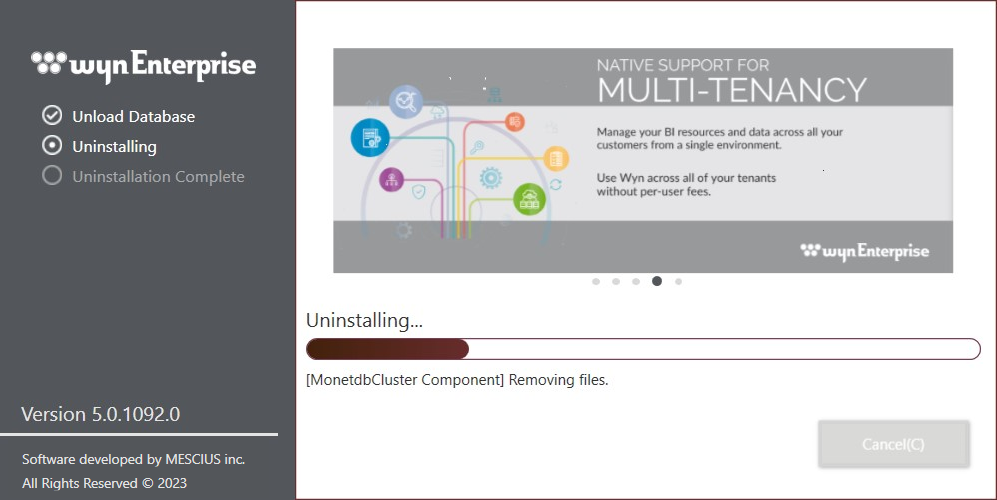
Click the Close button.
Wyn Enterprise is uninstalled successfully.
